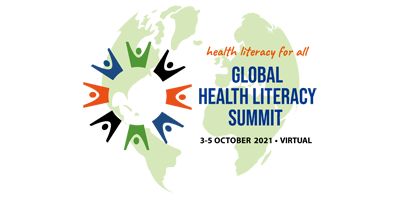Abstract Preview
Abstract
|
Title Health literacy assesment in primary care – pilot study with the HLS-EU-Q12 survey instrument |
|
Type Poster Presentation Only |
|
Theme Global Health Literacy Summit 2021 |
|
Topic Health literacy and patient safety |
Authors
|
Main Author Aleksandar Jovanović1 |
|
Presenting Author Aleksandar Jovanović1 |
|
Co-Author Dušanka Krajnović1 Andrijana Milošević Georgiev1 Stana Ubavić2 |
Authors' Institution
|
Department / Institution / Country Department of social pharmacy and pharmaceutical legislation / Faculty of Pharmacy- University of Belgrade / Serbia (Србија)1 Department of social pharmacy and pharmaceutical legislation / National Agency for Medicines and Medical Devices in Serbia / Serbia (Србија)2 |
|
Abstract Content (abstracts should be written in Size 11 font, Arial font style) Introduction: Persons with limited health literacy (HL) have difficulty in utilization of healthcare resources, and understanding, assessing, and exploiting health-related information. Poor health literacy of primary care patients is often associated with poor health outcomes, poor medication adherence, poor control of chronic illness, and higher hospitalization rates. Limited health literacy is often underrecognized by health care providers and little research has been carried out in primary care facilites in Serbia, pharmacies in particular. Methods: We evaluated and compared the performance of the European Health Literacy Survey - short version with 12 question (HLS- EU - Q12) for detecting patients with limited/not limited health literacy in one primary health care center and two community pharmacies. This was a pilot study with the cross sectional design on a convenient sample, excluding patients with medical education or backgorund. We collected sociodemographic data. Out of 143 patients, majority were women (68.5%), with high education (63.6%). Slightly predominant were participants from small comminites (51.7%) than the capital city. Only 12.5% patients had excellent health literacy and 32.9% showed sufficient health literacy. The remaining 54.6% of the participants had limited health literacy, including 19.6% whose health literacy was inadequate. Mean HLS-EU scale score was 31.94 ( SD = 7.56). Higher levels of HL were associated with university and post-university education (p<0.001). No empirical evidence strengthening either the link with place of residence (p=0.290), gender (p=0.797), or social status (p=0.338) were found. Additionaly, no significant differences were observed for the chronic illness, self-reported general health, self-interest in health and sourse of health information participants use (p˃0.05). Conclusions: In conclusion, when applying the HLS-EU-Q12 to measure HL in primary care, it was found that the prevalence of limited HL is high, and the high level of HL was associated with higher levels of education at primary care patients. Other factors that could contribute to the variance in HL should further be investigated in a larger sample of primary care patients in Serbia with particular focus on patients with chronic illness. |
|
Other Topics Preferences(Maximum of two topics only and please note that the Program Committee reserves the right to decide on the final presentation format.) Health literacy and clinical healthcare settings (incl primary care)
|
Requires Audio or Video system for Presentation?: No
